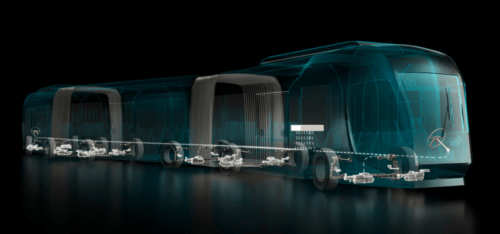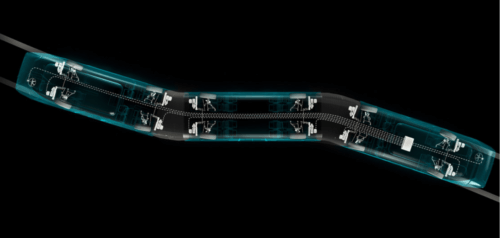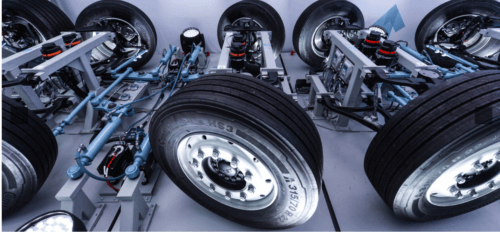
A German company has launched a new steering system designed to enable longer, more efficient multi-segment tram-like buses
German specialist manufacturer Hübner unveiled a new development at InnoTrans World late last year which it says is a first for public transport: a steering system for high-capacity buses which allows vehicles of more than two segments. The products uses a new, modular steering system which Hübner says makes it possible to safely manoeuvre 30-metre-long tram-style high-capacity buses in urban settings. The steering system has been designed to intelligently control all six axles high-capacity buses to allow for safe and secure driving of such large vehicles. Uwe Bittroff, Head of Gangway Systems for Street Vehicles at Hübner, explained: “For the safe operation of high-capacity buses, a reliable steering system is essential to make these large vehicles safely manoeuverable in urban traffic. Our steering technology has been designed so that in the event of a malfunction there is no danger for passengers or the surrounding area. With this innovation, we are offering a unique feature in this area. Until now, there is no other system for road vehicles that can control more than two axles to this degree and provide safe steering operation.” The system is being offered with modular elements which Hübner says will make it possible for bus or train manufacturers to integrate it into vehicles on an individual basis. Through the use of pre-developed system components, individual vehicle concepts can also be flexibly integrated into the infrastructure of growing cities, the company says, and in addition, the system can be used in bi-directional operation and has an interface for autonomous driving, making it future-ready.
Helge Förster, General Manager of the Hübner Group, explained the background of the development: “As a supplier to rail and bus manufacturers, we want to be thinking ahead in the public transport sector. Because one thing is clear: To reduce CO2 emissions and to make mobility more sustainable, we will be needing new mobility solutions – also in local transport. One possibility where we see great potential is high-capacity buses.”
“High-capacity buses look like trams running on rubber wheels and are particularly well-suited for cities that require large transport capacities in a short amount of time,” added Stefanie Böge, Head of Mobility Road Development Projects. Hübner’s projected high-capacity buses would consist of three vehicle segments with a total of six axles and two turntables, with a total length of over 30 metres and an estimated maximum capacity of up to 300 passengers, but without the need to depend on large amounts of special infrastructure like a tramway. The company says they would offer a more cost-efficient alternative to light rail and can be deployed more quickly, as well as being easier to incorporate into a city’s existing road system.
Previous experiments with actively steered multi-section articulated buses include a prototype AutoTram Extra Grand built by Göppel and unveiled in Dresden in 2012 in association with the Fraunhofer Institute for Transport and Infrastructure Systems. Unlike conventional bi-articulated buses which use two passively-steered or non-steering trailer sections, the AutoTram Extra Grand used an actively steered centre section and conventional-style third section. Hübner’s technology will allow all three sections to be actively steered.



